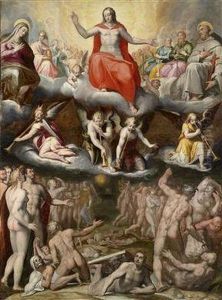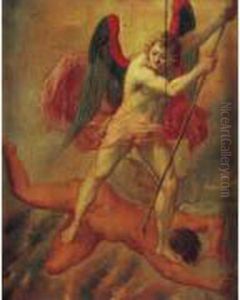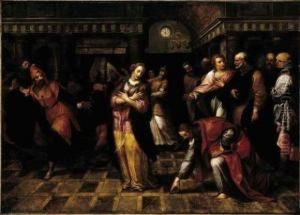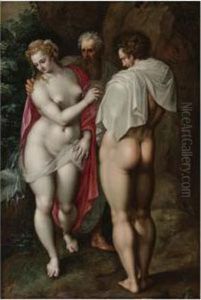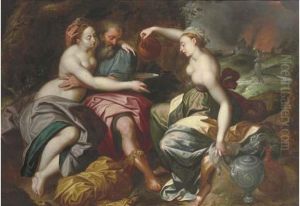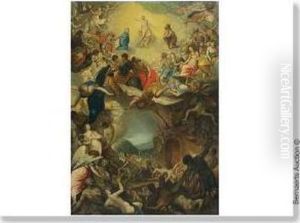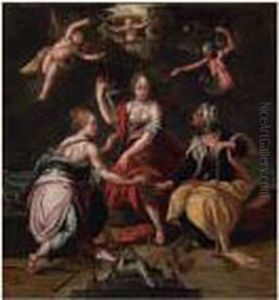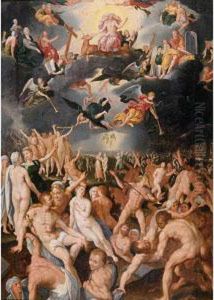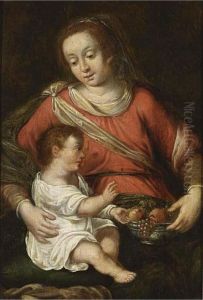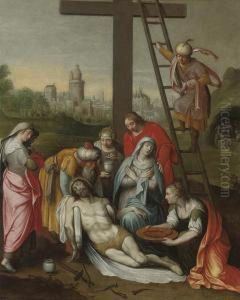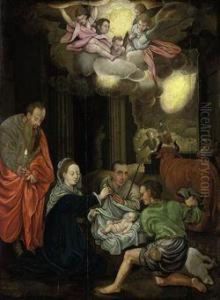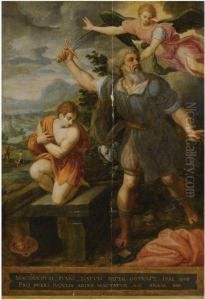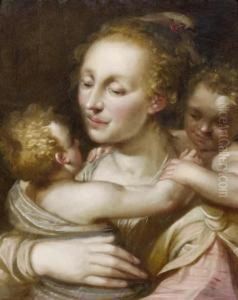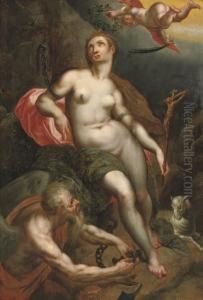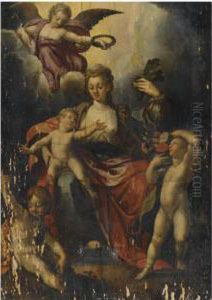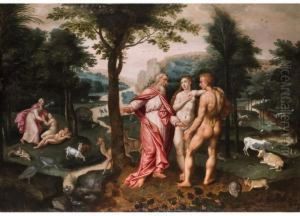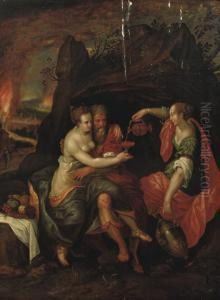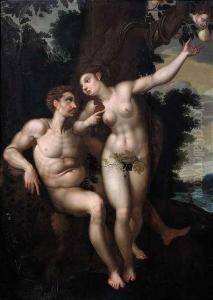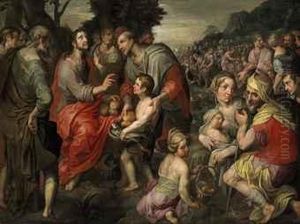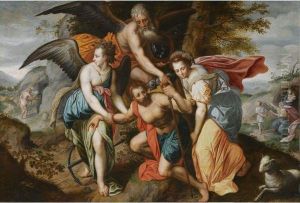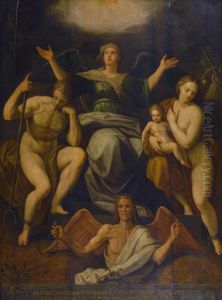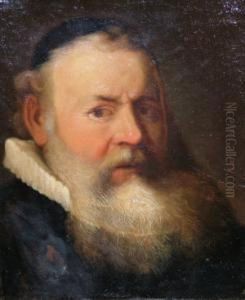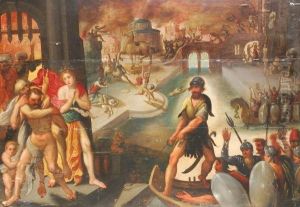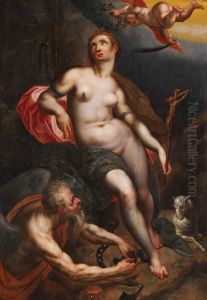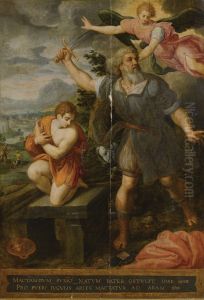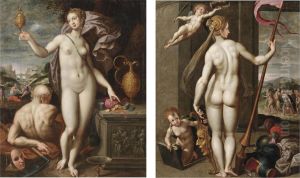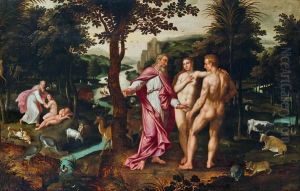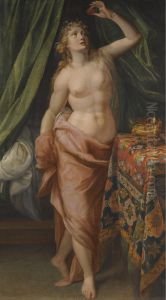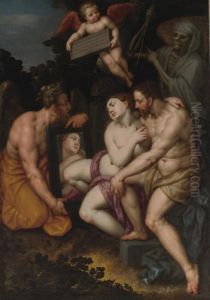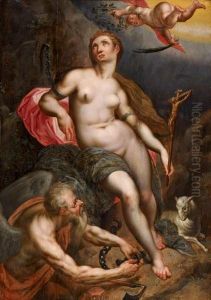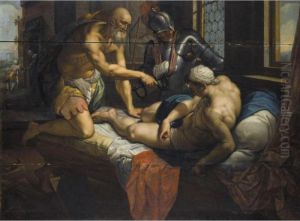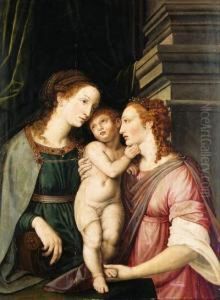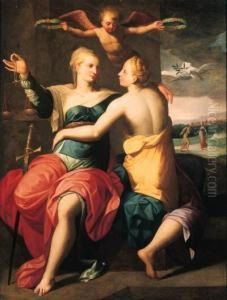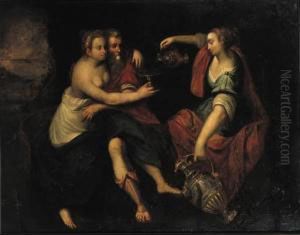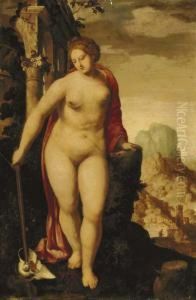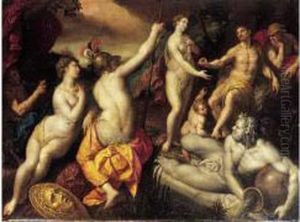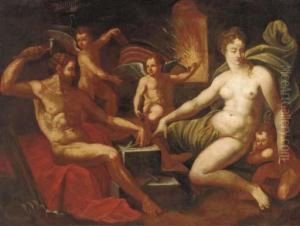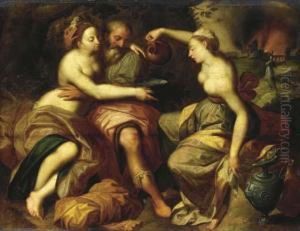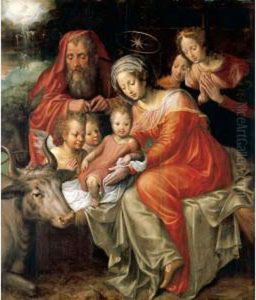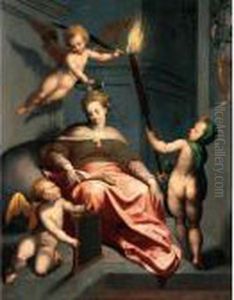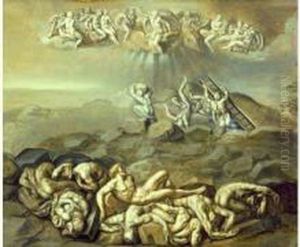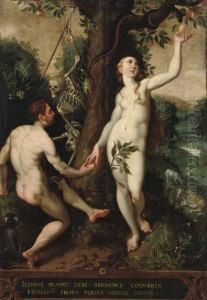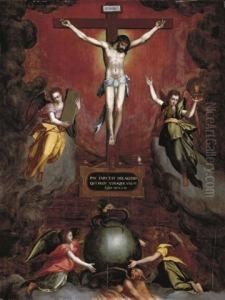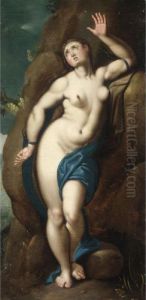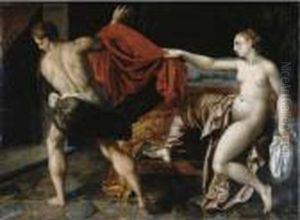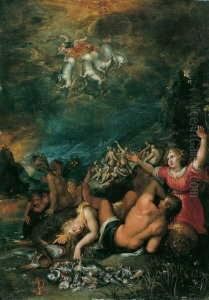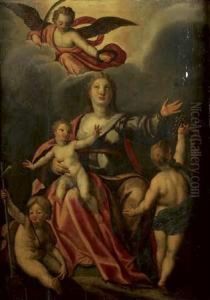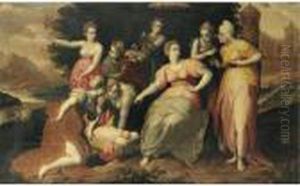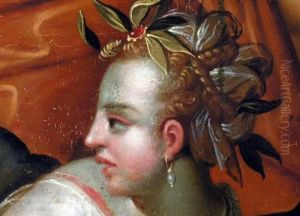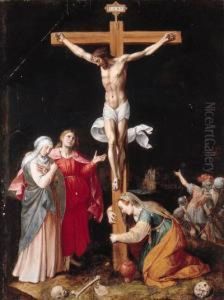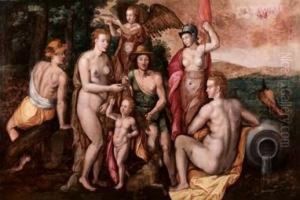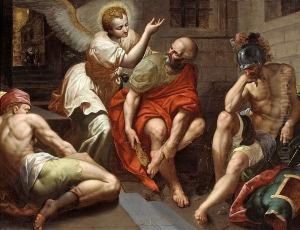Jacob I De Backer Paintings
Jacob de Backer was a Flemish mannerist painter and draughtsman active in Antwerp in the second half of the 16th century. He is known for his monumental historical and mythological paintings characterized by their complex compositions and lavish detail. Unfortunately, much of Jacob de Backer's life is shrouded in mystery, and even the exact dates of his birth and death are not firmly established; he is thought to have been born around 1540 and to have died around 1591.
De Backer's early life and training are not well-documented, but it is believed that he was a pupil of the artist Antonio Palermo and later worked in the studio of Hendrick van Steenwijk I. He was not registered as a master in the Antwerp Guild of Saint Luke, which has led some scholars to speculate that he may have worked as an assistant in other artists' workshops rather than having his own.
His works often contain a high number of figures, presented in a dynamic and dramatic fashion. De Backer was particularly skilled in the use of color and the depiction of light, creating vivid scenes that are both intricate and expressive. One of his most famous works is the 'Last Judgment', a large triptych that showcases his ability to portray a complex narrative within a single composition.
Despite his obvious talent, Jacob de Backer did not achieve widespread fame during his lifetime, and his works were often attributed to more famous contemporaries. It wasn't until the 20th century that his contributions to Flemish art began to be recognized and appreciated. Today, his paintings can be found in various museums and collections, and he is considered an important figure in the Flemish Mannerist movement. However, the scarcity of biographical information and the lack of signed or documented works have continued to make it difficult for art historians to fully assess his oeuvre and influence.
